Given in the figure are two blocks and of weight and, respectively. These are being pressed against a wall by a force as shown. If the coefficient of friction between the blocks is and between the block and the wall is, the frictional force applied by the wall on the block is:
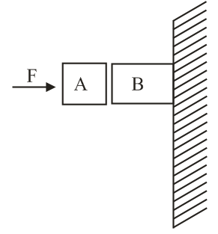


Important Questions on Friction
Two masses and connected by an inextensible string over a frictionless pulley are moving as shown in the figure. The coefficient of friction of horizontal surface is . The minimum weight that should be put on top of to stop the motion is,
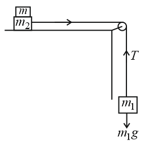
A block of mass is kept on a rough inclined plane as shown in the figure. A force of is applied on the block. The coefficient of static friction between the plane and the block is . What should be the minimum value of force such that the block does not move downward? (Take, .)
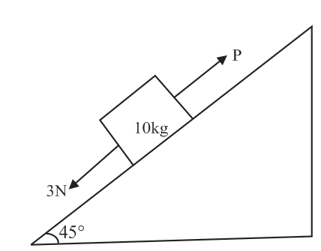
A block kept on a rough inclined plane, as shown in the figure, remains at rest upto a maximum force down the inclined plane. The maximum external force up the inclined plane that does not move the block is . The coefficient of static friction between the block and the plane is (take, ),
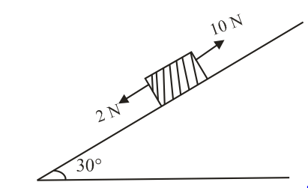
Starting from rest, a flat car is given a constant acceleration, . A cable is connected to a crate of mass as shown. Neglect the friction between the floor and car wheels and mass of pulley. Calculate the corresponding tension in the cable. The coefficient of friction between crate and floor of the car is . The tension in cable is,
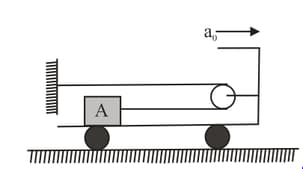
The coefficient of friction between and blocks is and between block and ground is , respectively. Choose the correct statements.
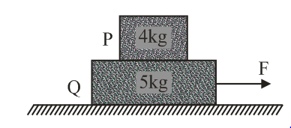
A body of mass lies on a rough inclined plane of inclination with the horizontal. When a force of is applied on the block parallel to and upward the plane, the total reaction by the plane on the block is nearly along:
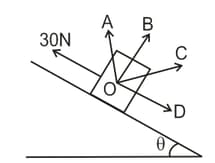
The system is pushed by a force as shown in figure. All surfaces are smooth except between and . The friction coefficient between and is . The minimum value of to prevent block from downward slipping is,

